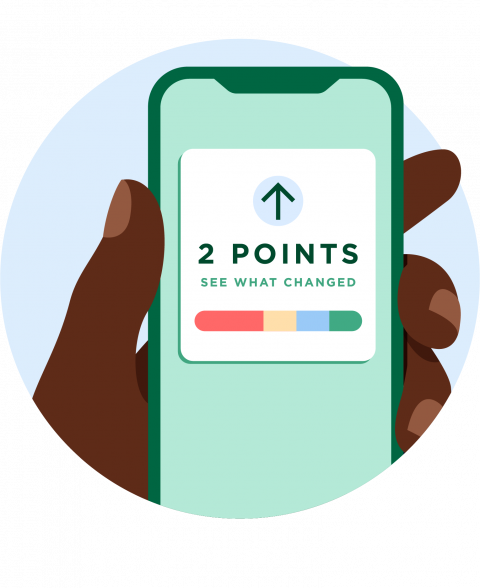When shopping online, there’s more to consider than what to buy and how much to spend. If you plan to shop marketplaces such as Amazon, Etsy and Walmart that host third-party sellers, you’ll also want to watch out for scams.
Derrek Casebolt thought he was getting a steal when he bought a gaming controller and headphones bundle, normally priced around $170, for about $100 from a seller on the Walmart app. Soon after, Casebolt — who works for UPS in the Fresno, California, area — received a phony tracking number for the order and learned he’d been scammed. “I saw the number, and I was like, ‘That’s not right.’ I immediately knew.”
Casebolt then double-checked the order details and noticed the seller had used a name similar to that of a legitimate company, but the spelling was off. He tried to contact the seller unsuccessfully. “When I couldn’t get ahold of them, I immediately let Walmart know,” he says. “But they didn’t really give me any information. They just told me to go to my bank.” The bank that issued Casebolt’s credit card removed the charge.
According to a TransUnion study from the second quarter of 2024, among the 40% of consumers who said they were targeted by online, email, phone call or text message fraud, 18% said they were targeted in third-party seller scams on legitimate e-commerce websites.
Get score change notifications
See your free score anytime, get notified when it changes, and build it with personalized insights.

Know how third-party scams work
Most third-party sellers — businesses that sell products through another company’s marketplace — won’t pose a problem. But some are scammers that use all sorts of tactics to rip off and extort buyers. Knowing what you’re up against can help you protect yourself. Some common third-party shopping scams include:
-
The seller has a product on sale for an extremely low price. The item turns out to be counterfeit, defective or simply doesn’t exist.
-
The seller gives a bogus tracking number to make you think they shipped your item, when they did not, or they send the wrong item.
-
The seller refuses to accept returns or will do so only if you pay a high shipping fee.
-
The seller asks you to pay outside of the marketplace, such as with cash or on a separate platform like Venmo.
Verify the seller
It isn’t always immediately clear that an item is being sold by a third party, not by the company whose website you’re using. Read search results and product pages carefully.
Amazon notes whether an item is “sold by Amazon.com” or another seller. Target’s third-party sellers, known as Target Plus Partners, are marked “sold and shipped by” followed by the business name. Clicking on the seller name should take you to a page with more detailed information, like how to return an item to the seller and its contact information. Many major e-commerce sites will highlight their top-rated sellers, which tend to be trustworthy.
On Walmart’s site, shoppers can sort results by “retailer” and choose among Walmart, pro sellers (those who provide exceptional service) and marketplace sellers whose orders are fulfilled by Walmart.
You can use the Better Business Bureau’s Scam Tracker database to search for scams by website or business name. You can also do a Google search for the item or company name along with words like “scam” or “fake” and see what results come up.
Read reviews
Don’t just glance at an item’s overall rating. Take time to browse individual reviews. Look out for common complaints. Do multiple reviews highlight similar issues with delivery, returns or product quality?
Be skeptical of overwhelmingly positive reviews, too. “Sometimes people are paid or given free products to review the product that they’re reviewing. So just be aware that could be at play as well,” says Christine Todaro, an attorney in the Federal Trade Commission’s Bureau of Consumer Protection.
Some shopping tools, like Fakespot, analyze online reviews to help you distinguish between real and bogus ones.
Reviews or images from customers that don’t match the product you clicked on can signal a scam. For example, if you’re shopping for a pair of sandals and all of the reviews on the product page are for hoodies, you should probably rethink that purchase.
Check retailer policies
Etsy, Amazon and other sites offer protection for buyers dealing with third-party sellers. Typically, retailers promise to issue refunds if an item doesn’t arrive or isn’t as the seller described. Read what circumstances these policies cover and don’t cover, and be sure to keep track of any return or refund deadlines that you may need to follow, Todaro says.
Get more financial clarity with NerdWallet
Monitor your credit, track your spending and see all of your finances together in a single place.

Pay with a credit card
Credit cards offer protection that debit cards, gift cards and other payment methods don’t. You can dispute a credit card charge within 60 days of it appearing on your billing statement.
If the retailer can’t work with you to resolve the issue, ask your credit card company to investigate. You could get your money back, like Casebolt did.
Keep records handy
Todaro recommends hanging on to important information about the purchase, such as product descriptions, refund policies and any communications you’ve had with the seller. If something goes wrong, the retailer or credit card issuer may need you to provide evidence to back up your claim.
Freeze and monitor your credit
Freezing your credit is a free way to restrict other people’s access to your credit reports. Credit freezes won’t prevent someone from stealing your credit card information. But if you fall for a shopping scam that compromises your personal data, having a freeze in place can stop the fraudster from using the information to apply for credit in your name.

